Election
Eknath Shinde Cancels Appointments and Heads to Native Village Amid Maharashtra CM Post Uncertainty
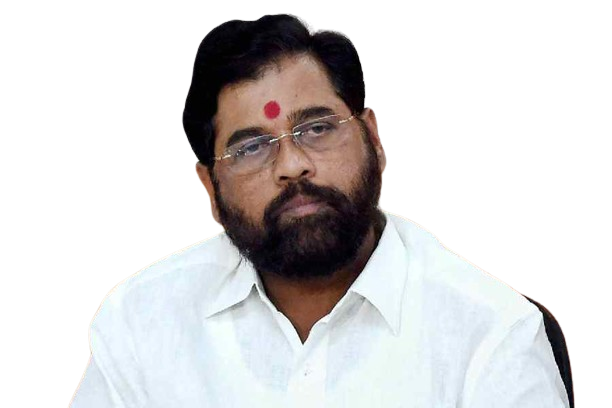
Contents
Introduction to the Current Political Landscape in Maharashtra
The political landscape in Maharashtra has recently become increasingly tumultuous, marked by significant developments surrounding the Chief Minister position. The state, known for its vibrant political history, is currently experiencing a phase of instability that has captivated public attention and raised eyebrows among political analysts. The recent actions of Eknath Shinde, who has made headlines by cancelling various appointments and retreating to his native village, are indicative of the uncertainties dominating the leadership of Maharashtra.
Amidst an evolving scenario that includes shifting allegiances and internal party discord, questions regarding Shinde’s tenure have come to the forefront. His decision to prioritize a return to his roots can be interpreted as a strategic move given the intricate dynamics of state politics. Shinde’s leadership has faced challenges, with various factions within the political spectrum vying for influence and power.
The role of political parties in this scenario cannot be understated. With the Bharatiya Janata Party (BJP) and the Uddhav Thackeray faction of Shiv Sena battling for control, the stakes have never been higher. The uncertainties surrounding the Chief Minister’s position have created an environment rife with speculation regarding potential alliances, political maneuvering, and their implications for local governance. As Eknath Shinde navigates this landscape, the outcomes of such interactions will significantly impact the trajectory of not only Maharashtra’s political future but also the well-being of its citizens.
Eknath Shinde: A Brief Political Biography

Eknath Shinde, a prominent figure in Maharashtra politics, has had a remarkable journey within the political landscape, particularly with the Shiv Sena party. Born on February 9, 1964, in a small village in Maharashtra,Eknath Shinde began his political career at a young age, joined the Shiv Sena party in the early 1980s, and quickly established himself as a dedicated grassroots leader. His early involvement in local politics helped him secure a seat in the Thane Municipal Corporation, demonstrating his commitment to public service.
Shinde’s rise within the Shiv Sena was marked by his ability to connect with the constituents. Over the years, he held various significant positions, including that of the party’s Thane district chief. This role allowed him to strengthen the party’s base in the region, positioning him as one of the key leaders in the state. His ascent culminated in his election to the Maharashtra Legislative Assembly, where he represented the Kopri-Pachpal constituency.
His political savvy and effective leadership led to him being appointed as Shiv Sena’s cabinet minister in 2014 under the Devendra Fadnavis government. In that capacity, Shinde made several contributions, especially in the urban development sector. His reputation grew, and he became known for his infrastructural initiatives, focusing on improving the quality of life for the residents of Maharashtra. Following the political upheaval in 2022, he was appointed Chief Minister of Maharashtra, navigating the state through a period of turbulence and uncertainty.
Shinde’s journey reflects a blend of resilience, ambition, and strategic thinking, characteristics that have defined his political career. Amid the recent challenges regarding his position as Chief Minister, understanding his background and motivations provides valuable insights into his decisions during this critical juncture in Maharashtra’s political narrative.
Details on Recent Cancellations of Appointments
In recent developments, Eknath Shinde, the Chief Minister of Maharashtra, has made headlines by cancelling several appointments that were originally scheduled for the immediate future. This sudden decision has sparked widespread speculation about the underlying motives behind these cancellations, particularly given the uncertain political landscape in the state. The appointments that were called off primarily included official meetings with senior bureaucrats, as well as engagements with various stakeholders crucial to governance.
It has been observed that the cancellations coincide with Shinde’s unexpected leave to visit his native village. This timing raises questions regarding whether personal or political considerations influenced his decision to step back from scheduled duties. The Chief Minister’s office has provided minimal commentary on the matter, leading to further conjecture among political analysts and the public alike.
To understand the context of these cancellations, it is essential to acknowledge the ongoing political turmoil within Maharashtra. The state has faced significant challenges that have resulted in shifts within the governance structure, as factions vie for power and influence. Such a precarious political environment can compel leaders to reassess their commitments, especially when public perception plays a crucial role in political stability.
Moreover, it is not uncommon for leaders in high-stakes positions to recalibrate their priorities during times of crisis. This has led to a growing sentiment that Shinde’s actions might be a strategic move aimed at realigning his focus in the light of mounting pressures, both internally and externally. Although the official reasons for the appointment cancellations remain vague, they undoubtedly represent a pivotal point in his leadership journey amidst considerable uncertainty regarding the future of his role as Chief Minister.
His Journey to the Native Village: Significance and Speculation

The return of Eknath Shinde to his native village amid the ongoing uncertainty surrounding his position as Chief Minister of Maharashtra holds substantial significance. Politicians often seek comfort and reflection in their roots, especially during turbulent times. For Shinde, this journey signifies a retreat to familiarity, where cultural ties and personal history can provide solace and clarity. It is common for leaders to reconnect with their origins, as it can offer valuable insights during periods of strife or decision-making.
This act may also be interpreted within the broader political landscape of Maharashtra. The timing of his departure from Mumbai, the hub of political activity, raises questions regarding his commitment to governance and his strategy for navigating the current challenges. Some speculate that this retreat is a tactical move to regroup and assess his position undisrupted by external pressures and media scrutiny. By stepping back from the political stage temporarily, Shinde allows himself the space to reassess his objectives and the direction of his leadership.
Furthermore, the cultural importance of such visits cannot be understated. In many Indian communities, particularly in Maharashtra, returning to one’s native village is imbued with meanings of humility, accountability, and reconnecting with one’s constituents. This journey allows Shinde to reinforce his bond with local supporters, showcasing his dedication to his roots while potentially revitalizing his public image amidst controversies.
As the political situation evolves, the implications of Shinde’s journey to his native village will likely continue to stir speculation and analysis, reflecting the complex nature of leadership and community ties in the political arena.
The Role of Shiv Sena and Other Political Factions
The political landscape in Maharashtra has always been complex, characterized by shifting alliances and inter-party rivalries. Shiv Sena, a dominant force in the state, currently finds itself at a crossroads as the uncertainty surrounding the Chief Minister’s post unfolds. After Eknath Shinde’s abrupt cancellation of appointments and his return to his native village, the party is grappling with internal dynamics and external pressures from other political factions that are keen to capitalize on the tumultuous situation.
Within Shiv Sena, varying opinions abound regarding the future direction of the party and its leadership. Members are concerned about the stability of Shinde’s position and what it may mean for their political aspirations. Some factions may advocate for a more proactive stance against rival parties, potentially seeking to solidify their influence in the Assembly. Meanwhile, others might push for a reevaluation of alliances that could shift the power balance within the state’s government. The response of Shiv Sena is indicative of a larger trend that can be seen among other political factions in the state as they assess the implications of Eknath Shinde decisions.
Other parties, such as the Nationalist Congress Party (NCP) and the Indian National Congress, are closely monitoring developments within Shiv Sena and may look to seize the opportunity to enhance their bargaining positions. They could leverage this uncertainty to rally support and strengthen their own political foothold in Maharashtra. The shifting allegiances among these factions indicate how fluid the circumstances have become, with potential alliances or oppositional front formation on the horizon.
The overarching response from Shiv Sena and these political factions highlights the intricate web of relationships and power plays that characterize Maharashtra’s political environment. As the situation evolves, the reactions and strategies employed by these parties will significantly shape the governance and future political landscape of the state.
Public and Media Reactions to Shinde’s Decisions
The recent actions taken by Eknath Shinde, particularly his decision to cancel appointments and retreat to his native village, have generated a wave of reactions from both the public and media. Various political commentators and analysts have expressed their opinions, ranging from supportive to critical, reflecting the multifaceted nature of the current political climate in Maharashtra. The abrupt cancellation of his scheduled engagements has raised eyebrows and sparked discussions regarding Shinde’s commitment to Eknath Shinde role as Chief Minister amidst ongoing uncertainties surrounding his tenure.
Media outlets have been quick to provide coverage of Eknath Shinde actions, with many interpreting the cancellations as indicative of deeper unrest within the political landscape. Analysts point out that such a retreat could signify a strategic move to regroup and reassess the political dynamics facing him. Public sentiment appears to be divided; while some constituents express disappointment over his absence from critical meetings, others view this pause as a necessary step for reflection in a tumultuous political moment. Outspoken citizens on social media platforms have indicated their concern about leadership stability, emphasizing the need for consistent engagement from top officials.
Moreover, political pundits have weighed in on the implications of Shinde’s departure to his village. Some argue that it may reflect a disconnect from pressing governance issues, particularly in a state grappling with multifarious challenges. Others suggest that this move allows Shinde to reconnect with his roots, fostering a sense of authenticity and transparency which might resonate with the electorate. Commentators have noted that in politics, appearances can significantly influence public perception. Therefore, how Shinde navigates this situation following his return may crucially determine the trajectory of his leadership in the coming months.
Implications for Governance in Maharashtra
The recent actions of Eknath Shinde, specifically his decision to cancel various appointments while heading to his native village, raise significant concerns regarding the implications for governance in Maharashtra. This absence could disrupt administrative continuity, leading to a vacuum that may hinder effective governance. The timing of Shinde’s departure is particularly critical as it coincides with numerous ongoing projects and developmental initiatives vital for the state’s progress.
Administrative continuity is essential for maintaining the momentum of various governmental programs. With Shinde’s physical absence from the seat of power, key decision-making processes may face delays. This interruption could create a ripple effect, where pending approvals for projects stall, thereby affecting not only immediate timelines but also long-term development plans for the region. The leadership void could weaken the operational efficiency of government departments, resulting in confusion and indecision amongst bureaucrats who rely on prompt directives from the Chief Minister.
Moreover, Shinde’s actions may contribute to uncertainty within the political landscape of Maharashtra, impacting the confidence of investors and stakeholders who are closely monitoring governance stability. Uncertain governance can deter investment opportunities due to perceived risks associated with political instability. Furthermore, citizens may express grievances over a lack of clarity and accountability in government affairs, especially if essential services and welfare initiatives experience disruptions due to leadership withdrawal.
As the state’s governance struggles with the implications of Shinde’s absence, observers will be keenly assessing the potential ramifications on the efficacy of his administration. If Shinde’s departure leads to extended delays in governance structures, the consequences may reverberate through various sectors, affecting not only immediate political stability but also the overall developmental trajectory of Maharashtra.
Also read:Maharashtra Election 2024: The Battle for Power Heats Up
Future Prospects: What Lies Ahead for Eknath Shinde and Maharashtra
The political landscape of Maharashtra has been marked by significant turbulence, particularly following Eknath Shinde’s recent decisions to cancel appointments and return to his native village. This situation has raised questions about his future and the subsequent implications for governance in the state. As Maharashtra continues to grapple with uncertainty, it is essential to analyze potential scenarios that may unfold as a result of current political dynamics.
One possibility is the realignment of party strategies in response to Shinde’s actions. If the political environment remains unstable, it is conceivable that other factions within the party may attempt to consolidate power, leading to internal strife. These shifts could pave the way for new leadership to emerge, founded on different ideological tenets or electoral strategies aimed at solidifying their base within Maharashtra.
Furthermore, upcoming elections may serve as a catalyst for change, compelling Shinde and his associates to recalibrate their political approach. The state’s electorate may demand greater accountability and transparency, prompting candidates to address critical issues such as infrastructure, healthcare, and employment. In this context, Eknath Shinde must not only focus on winning the support of his party but also engage in a more expansive dialogue with the wider community. This engagement could include grassroots initiatives that resonate with the electorate’s concerns.
The future trajectory for both Eknath Shinde and Maharashtra is contingent upon a multitude of factors, including public sentiment and political cohesiveness. As the dynamics continue to evolve, stakeholders will need to closely monitor developments that could significantly alter the sociopolitical fabric of the region. It remains to be seen how these potential outcomes will unfold and what strategies Shinde may employ to navigate the complex landscape of Maharashtra politics.
The Unfolding Drama of Maharashtra Politics
The political landscape of Maharashtra is currently enshrouded in uncertainty, especially following the recent actions of Eknath Shinde. With the abrupt cancellation of appointments and a retreat to his native village, Shinde’s movements signal a critical juncture in the Maharashtra Chief Minister dispute. The developments surrounding his leadership and the potential implications for the ruling coalition have captured the attention of political analysts and citizens alike.
Throughout the ongoing political drama, various factors have contributed to the evolving situation, underscoring the complexities of governance in Maharashtra. Shinde’s maneuverity suggests a strategic calculation as he navigates the shifting allegiances within the state’s political factions. Many observers speculate that his retreat may be a tactical decision, aiming to regroup and rally support as he assesses his position amid growing tensions. The intricacies of his political standing raise pertinent questions about the future direction of the state’s leadership.
Additionally, as Maharashtra’s political fabric continues to unravel, it raises broader implications for the future. The interplay between party loyalties, public opinion, and inter-party dynamics will undeniably shape the landscape in the coming months. The responses of key stakeholders to Shinde’s actions will be scrutinized closely, as they may indicate the shifting sands of power within Maharashtra’s politics. The narrative surrounding Shinde and the uncertainty of his role highlights the ongoing complexities that define the state’s political environment.
In conclusion, the unfolding drama in Maharashtra politics is a poignant reminder of the challenges faced by leaders in managing public expectations and party unity. As the situation develops, all eyes remain on Eknath Shinde, who appears poised to play a pivotal role in determining the future course of the state’s governance. The repercussions of his decisions will extend beyond the immediate context, potentially altering the political landscape for years to come.
Bihar
Ajay Kumar Mandal Resignation- JD(U) MP Offers to Quit Over Ticket Distribution Dispute-
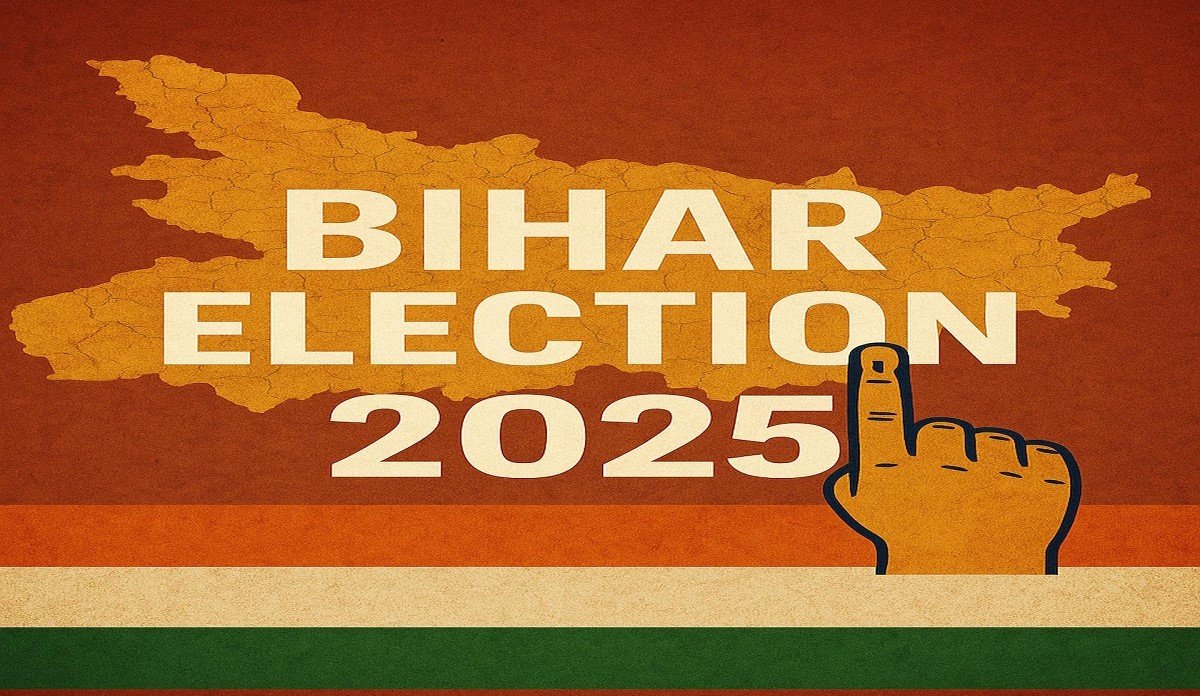
Contents
Bihar, Oct.14,2025:In a significant political development ahead of the 2025 Bihar Assembly elections, Janata Dal (United) [JD(U)] Member of Parliament (MP) from Bhagalpur, Ajay Kumar Mandal, has offered to resign from his position. This move has sent ripples through the state’s political landscape, highlighting internal conflicts within the ruling party-
Ajay Kumar Mandal’s Resignation Offer
On October 14, 2025, Ajay Kumar Mandal addressed a letter to Bihar Chief Minister and JD(U) President Nitish Kumar, seeking permission to resign from his MP post. In his communication, Mandal expressed his dissatisfaction with the party’s internal functioning and the recent ticket distribution process for the upcoming assembly elections. He stated that despite being the local MP, his advice was not sought during the selection of candidates, rendering his position untenable.
Exclusion from Ticket Distribution
Mandal’s letter highlighted several key concerns-
- Lack of Consultation: He was not consulted regarding the selection of candidates for the assembly elections, despite his long-standing association with the party and his position as the local MP.
- Neglect of Local Leadership: The opinions of district presidents and local leaders were reportedly ignored in the ticket distribution process.
- Preference for Outsiders: Individuals who had not contributed significantly to the party’s growth were allegedly being considered for tickets over seasoned local leaders.
These allegations point to a deeper issue of internal discord within JD(U), potentially affecting its unity and performance in the upcoming elections.
Bihar Assembly Elections 2025
The Bihar Assembly elections are scheduled for November 6 and 11, 2025, with results to be declared on November 14. The National Democratic Alliance (NDA), comprising JD(U), Bharatiya Janata Party (BJP), Lok Janshakti Party (Ram Vilas), Hindustani Awam Morcha (Secular), and Rashtriya Lok Morcha, has agreed on a seat-sharing formula. Under this arrangement, JD(U) and BJP will contest 101 seats each, while other allies will contest fewer seats. However, the allocation of seats has led to dissatisfaction among some party members, as evidenced by Mandal’s resignation offer.
Internal Strife Within JD(U)
Mandal’s resignation offer is not an isolated incident. JD(U) MLA Gopal Mandal staged a sit-in protest outside Chief Minister Nitish Kumar’s residence, demanding a ticket for the upcoming elections. He expressed his frustration over being overlooked despite his contributions to the party. Additionally, former MLA Jay Kumar Singh resigned from JD(U), citing dissatisfaction with the seat-sharing arrangement and the allocation of the Dinara constituency seat to Rashtriya Lok Morcha. These events underscore the growing discontent within the party ranks.
Reactions from Party Leadership
The JD(U) leadership has yet to officially respond to Mandal’s resignation offer. However, Chief Minister Nitish Kumar has been reportedly upset over the seat-sharing arrangements within the NDA, indicating potential challenges in maintaining party cohesion. The party’s ability to address these internal issues will be crucial in determining its performance in the upcoming elections.
The Broader Implications for Bihar Politics
Mandal’s resignation offer and the subsequent protests by other party members highlight a significant challenge for JD(U) ahead of the Bihar Assembly elections. Internal conflicts and dissatisfaction with ticket distribution could undermine the party’s prospects, especially in a politically competitive state like Bihar. The outcome of these developments will not only impact JD(U)’s standing but also influence the broader political dynamics in the state.
A Test for JD(U)’s Unity
As Bihar approaches its assembly elections, the internal strife within JD(U) presents a critical test for the party’s unity and leadership. The party must address the concerns raised by its members and work towards resolving internal conflicts to present a united front to the electorate. Failure to do so could have significant repercussions for JD(U)’s performance in the upcoming elections and its future in Bihar’s political landscape.
Breaking News
Anta Bypoll Rajasthan emerges as a political battleground- Congress fields Pramod Jain Bhaya, BJP undecided, independent Naresh Meena enters-
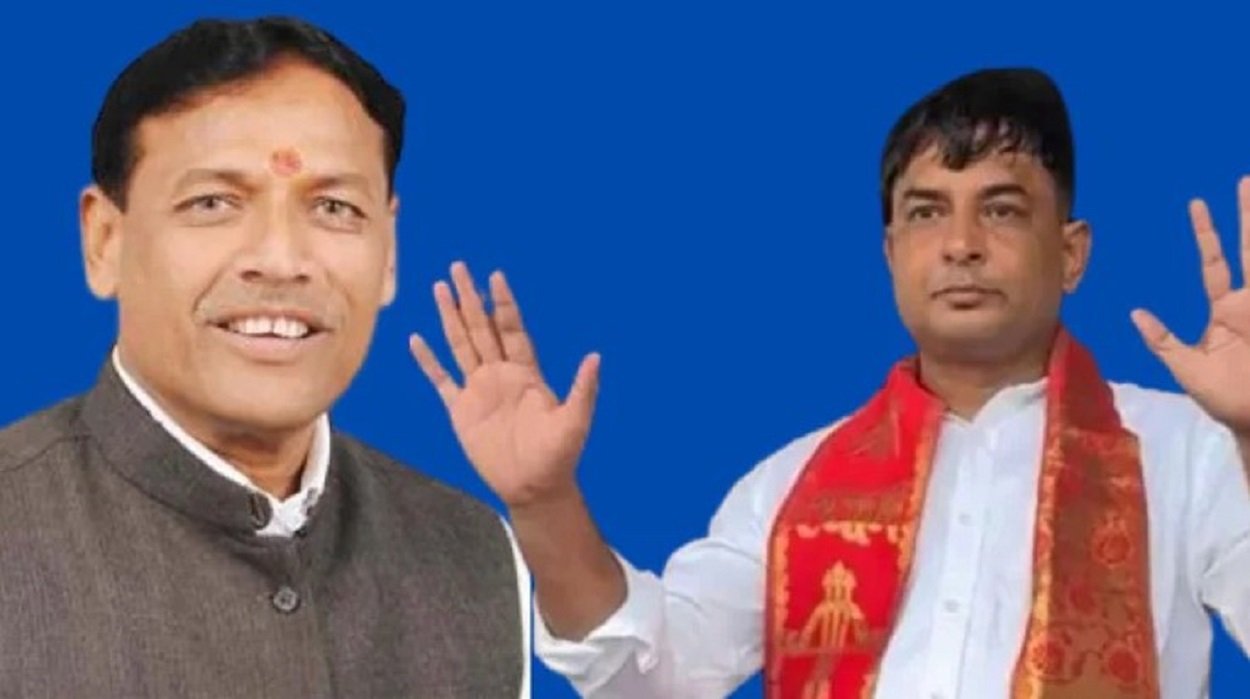
Contents
Rajasthan, Oct.11,2025:Anta Bypoll Rajasthan has swiftly become the focus of political strategists across Jaipur, Jhalawar, Baran, and even Delhi. The November 11 by-election sees a rare three-cornered contest: Congress, BJP, and a formidable independent challenger, Naresh Meena. This dynamic could rewrite local alliances and test party strength ahead of bigger electoral battles-
From the moment the seat was vacated by disqualified BJP MLA Kanwarlal Meena, political attention turned to how the Anta Bypoll Rajasthan would proceed—and whether it could be more than a mere local contest.
Background & Stakes
The Anta Bypoll Rajasthan came into being after the disqualification of the sitting BJP legislator, Kanwarlal Meena. In May 2025, Meena was sentenced to three years’ imprisonment in a 20-year-old criminal case in which he had allegedly threatened a sub-divisional magistrate using a pistol.
Following wise legal processes and court rulings—High Court, Supreme Court—his membership was cancelled.
The Election Commission of India (ECI) has scheduled polling on 11 November 2025, with results to be declared on 14 November 2025.
With 227,563 registered voters in the Anta constituency—1,16,000+ men, 1,10,000+ women, and 4 others—the electorate is significant.
Now, every vote, every margin matters, because Anta Bypoll Rajasthan may be seen as a microcosm of larger state trends and a test for both main parties.
Key Players in the Anta Bypoll Rajasthan Triangular Race
Congress and Pramod Jain Bhaya
In a swift move, Congress has fielded Pramod Jain Bhaya as its candidate for Anta Bypoll Rajasthan.
Bhaya is no political lightweight: a three-time MLA, he served as a minister in the Ashok Gehlot government from 2018 to 2023.
In the 2023 Assembly Elections, he lost narrowly to Kanwarlal Meena by 5,861 votes, which means he has both name recognition and core supporters.
Congress is banking on Bhaya’s established networks, party machinery, and clean image to consolidate non-BJP and anti-incumbent votes.
BJP’s Dilemma & Internal Struggle
Unlike Congress, BJP has not yet finalized its candidate for Anta Bypoll Rajasthan.
Two prominent names being circulated include Prabhulal Saini and a possible family member of Kanwarlal Meena.
Interestingly, senior leaders CM Bhajan Lal Sharma, former CM Vasundhara Raje, and state BJP president Madan Rathore held a strategic meeting at Raje’s residence to deliberate candidate selection and election tactics.
Raje’s influence in Jhalawar-Baran is unparalleled. Her word carries weight, and BJP’s delay seems partly aimed at securing her approval before announcing the final nominee.
Thus, BJP must balance local loyalties, caste equations, and Raje’s positioning as it moves to lock in a candidate.
Independent Challenger Naresh Meena
Completing the triangle is Naresh Meena, a rebel who had sought a Congress ticket but, after being spurned, declared his candidacy as an independent.
Naresh has contested elections before as an independent, performing strongly in past contests (e.g., at Chhabra, Devli).
He also seems to command support from community groups, local networks, and possibly smaller parties. His entry in Anta Bypoll Rajasthan compels both major parties to rethink vote arithmetic.
Critically, Naresh’s presence could split the vote from Congress or sway leaners toward BJP, depending on how BJP positions itself.
Voter Landscape & Demographics in Anta
The electorate is socially layered. The Anta Bypoll Rajasthan constituency has approximately:
- 50,000 Mala (Dhakad)
- 45,000 Meena
- 30,000 Scheduled Castes
- 18,000 ST/SC
- 15,000 Muslims
- Smaller numbers of Jats, Gurjars, Brahmins, Mahajans, etc.
Traditional allegiances: Meena community largely leaned to Congress, but BJP has made inroads in recent contests. The Mala (Dhakad) community is often decisive.
If Naresh Meena draws 20,000–30,000 Meena votes, that could derail Congress’s base, and BJP may benefit if it retains core support and makes gains among non-Meena groups.
Youth, first-time voters, and issue-based voters might swing the contest. Local issues—development, water, infrastructure—will matter.
Strategic Impact of Naresh Meena in Anta Bypoll Rajasthan
Naresh’s candidacy transforms what could have been a straight fight into a triangular contest. Key strategic implications:
- Vote Splitting Risk: The biggest threat to Congress is vote-splitting—Naresh could siphon off Meena community votes, weakening Bhaya’s margin.
- Kingmaker Role: If Naresh draws close, his support or exit (hypothetically) could decide tight margins.
- Brokered Alliances: BJP might quietly court Naresh’s supporters or position candidates to attract those votes.
- Neutralizing Congress Bloc: For Congress, holding the Meena vote solidly is paramount; any leak could cost.
Hence, Anta Bypoll Rajasthan is no throwaway; its outcome may reflect savvy candidate strategy, grassroots mobilization, and caste arithmetic.
Electoral Mechanics, Rules & Voter Access
The ECI has taken steps to make the Anta Bypoll Rajasthan accessible:
- Voters without EPIC (Electoral Photo Identity Card) may vote using any one of 12 alternative photo IDs (Aadhaar, driving license, PAN, etc.).
- 15 IAS + 3 IPS observers have been appointed to ensure fair elections and monitor expenditure.
- The Model Code of Conduct is in force.
- Polling booths and staff will cater to persons with disabilities, veiled voters, and others requiring special facilitation.
These mechanisms aim to maximize participation, reduce disenfranchisement, and prevent misuse of authority.
Political Significance of Anta Bypoll Rajasthan in State Politics
Though a single seat, Anta Bypoll Rajasthan carries symbolic weight:
- It becomes a political litmus test: for BJP’s internal coherence, Congress’s revival, and independent viability.
- For Vasundhara Raje, it’s a chance to reaffirm influence in her stronghold area.
- For CM Bhajan Lal Sharma, success or failure in Anta may reflect his handling of state issues and public trust.
- Parties may project this as a prelude to the 2028 Assembly elections, testing strategies, alliances, and voter mood.
A win by Congress could boost morale; a win by BJP could reaffirm dominance; a near upset or strong showing by Naresh could reshape future alliances.
Risks, Wild Cards & Prediction Scenarios
Risks & Wild Cards
- Major swing due to local issue (water, roads, jobs) overshadowing caste patterns.
- Alliances or secret deals late in the game—say, a tacit pact between BJP and Naresh’s supporters.
- Voter turnout surprise: if base turnout differs from projections, margins shift sharply.
- Election day disruption or complaint escalation could tilt perceptions.
Prediction Scenarios
- Congress Victory: If Bhaya retains the Meena community and consolidates SC/ST/Mala votes, he wins, but margin likely narrow.
- BJP Upset: If the BJP picks a strong candidate, uses Raje’s clout effectively, and draws non-Meena votes, they may overcome the split.
- Near-win or Independent Surge: Naresh finishes strong but fails to win—his vote tally may embarrass establishment parties and shape next moves.
Given current dynamics, the race looks tight between Congress and BJP, with Naresh as a spoiler whose votes will be crucial.
Will Anta Bypoll Rajasthan Reshape Local Power
Anta Bypoll Rajasthan is fast becoming more than a routine by-election. It is a stage where local identities, party dynamics, and candidate personalities converge.
Congress’s smart early nomination of Bhaya, BJP’s strategic deliberations involving Raje, and Naresh Meena’s independent ambition—together they create a high-stakes triangular fight. The seat’s result will echo beyond Baran: it may validate strategies, reshape calculations, and set precedents for coalition management in Rajasthan.
Breaking News
Vice President Election 2025 Result
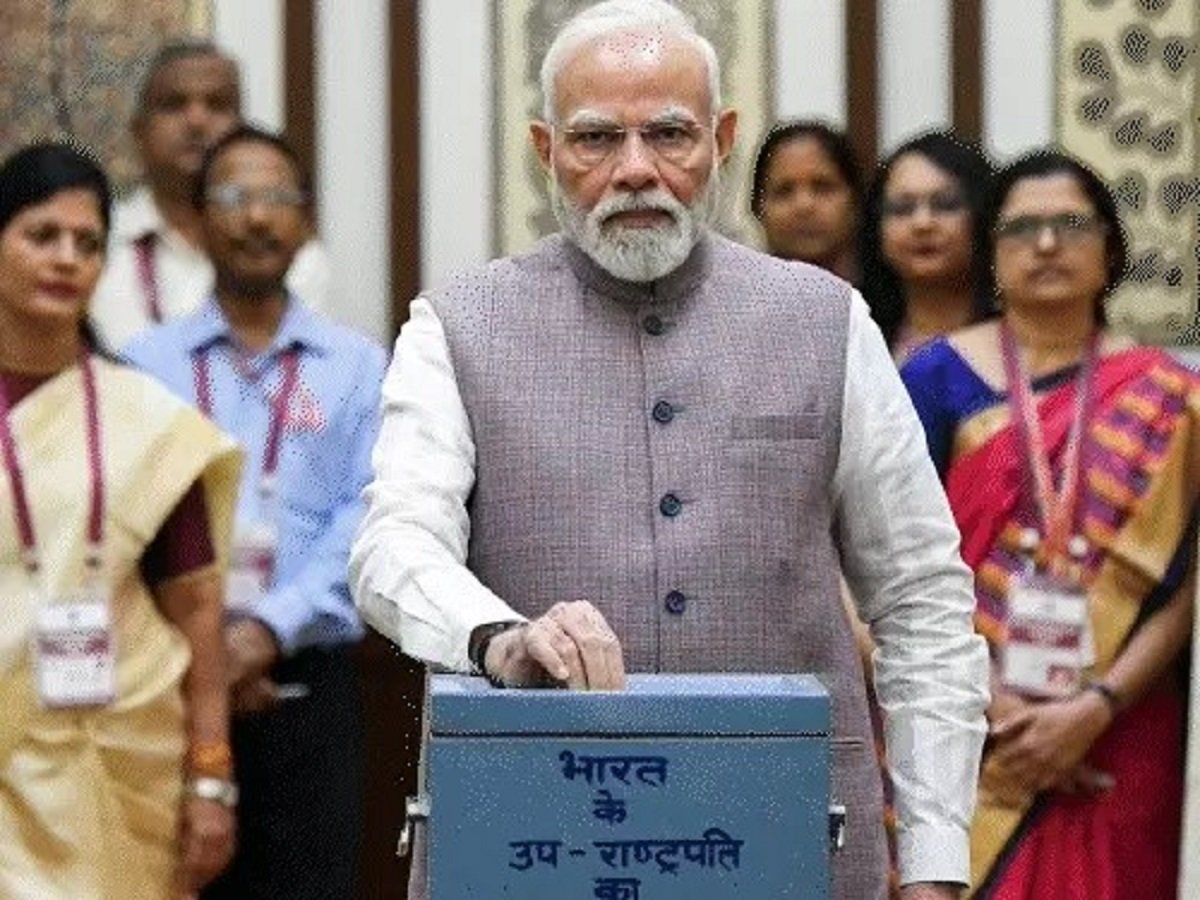
Contents
New Delhi, Sep.09,2025:Although official numbers gave NDA the edge (approximately 425 MPs), cross-voting and secret ballots meant surprises were possible. YSR Congress’s 11 MPs backed NDA, further consolidating their lead-
Vice President Election 2025 Result- A Grand Reveal
Vice President Election 2025 Result was nothing short of dramatic. Voting began at 10 a.m. on 9 September 2025 and concluded at 5 p.m., followed by counting from 6 p.m. onward, with results expected around 8 p.m.
Record Voter Turnout and Timing
A total of 781 MPs cast their votes, including members from both the Lok Sabha and Rajya Sabha. The prompt start and efficient completion of the voting process set the stage for a high-stakes evening of counting and anticipation.
Cast of Candidates and Political Dynamics
The contest featured two prominent contenders:
- NDA’s nominee: Maharashtra Governor C P Radhakrishnan
- INDIA bloc’s pick: Former Supreme Court Judge B Sudershan Reddy Jagdeep Dhankhar’s mid-term resignation triggered this election, creating an unexpectedly open contest.
Abstentions- BRS, BJD & Akali Dal
Several regional parties abstained from voting:
- Biju Janata Dal (BJD) and Bharat Rashtra Samithi (BRS) opted out, weakening the opposition bloc.
- Shiromani Akali Dal did not participate, citing floods in Punjab.
Cross-Voting- The Wild Card
Although official numbers gave NDA the edge (approximately 425 MPs), cross-voting and secret ballots meant surprises were possible. YSR Congress’s 11 MPs backed NDA, further consolidating their lead. Opposition hoped some dissenting MPs might vote across party lines, keeping tension alive.
Mock Poll Drama and Party Unity
The INDIA bloc staged a mock poll on Monday to rehearse unity and strategy—a symbolic gesture ahead of the real vote.. Meanwhile, NDA arranged last-minute huddles to secure loyalty, though two MPs skipped breakfast meetups, fuelling speculation of internal dissent.
Legal Highlights- Voting from Jail
Notably, undertrial prisoner Amritpal Singh, incarcerated in Dibrugarh jail, cast his vote—emphasizing legal provisions that allow voting under custody with proper permissions.
Behind-the-Scenes Strategies — Why the Result Surprised Us
- Regional abstentions shifted numbers unexpectedly.
- Cross-voting potential added uncertainty despite NDA’s numerical advantage.
- Mock poll unity showcased opposition resolve—but counting night would tell.
- Legal and symbolic flashpoints (e.g., jail voting) shaped public narrative and perception dramatically.
What the Numbers Say- Math of Victory
- Total electors: 781 MPs
- Majority needed: 391 votes
- NDA Strength: ~425 MPs
- With YSRCP support: ~436 guaranteed votes
Thus, NDA was favored, but secret ballots meant suspense lingered.
What This Means for India’s Democracy
- The Vice President Election 2025 Result reaffirms voting rights—even for those under incarceration.
- Abstentions by regional parties highlight growing strategic neutrality in Indian politics.
- Cross-voting and secret ballots remain key democratic unpredictables.
- This election sets the stage for tightening alliances ahead of future national polls.
The Vice President Election 2025 Result is a compelling mix of numbers, strategy, last-minute shifts, and democratic drama—making it one of the most riveting political spectacles of 2025.
Let me know if you’d like me to expand any section, provide graphical data, or prepare a follow-up coverage post!
Breaking News
96% voting till 3pm vice president election

Contents
New Delhi, Sep.09,2025:The Vice President is elected by an Electoral College of MPs from both Houses, including nominated Rajya Sabha members-
96% Voting Till 3 pm Vice President Election: Why Turnout Skyrocketed
96% voting till 3pm vice president election saw an extraordinary surge of participation in record time, with close to full voting accomplished by early afternoon. According to PTI, official sources confirm that 96% of MPs had cast their ballots by 3 pm.
A Race Born from Health Crisis and Sudden Resignation
This early election was necessitated by the abrupt resignation of Jagdeep Dhankhar, who stepped down in July due to health concerns, although his term was expected to run until August 2027.
Under Article 63(2) of the Constitution, an election must be held “as soon as possible” when a Vice President’s office becomes vacant.
The contenders:
- NDA’s candidate: C. P. Radhakrishnan, Governor of Maharashtra and former BJP lawmaker.
- Opposition’s nominee (INDIA bloc): Justice B. Sudershan Reddy, retired Supreme Court judge.
Who’s Voting—and Who’s Sitting Out
Akali Dal, BRS & BJD Pitfalls
Several parties, citing various reasons, abstained from voting:
- BRS: Cited farmer distress and urea shortages in Telangana. Despite respecting both candidates, the party refrained from voting.
- BJD and Shiromani Akali Dal also abstained—BJD due to political distancing, and Akali Dal due to severe flooding in Punjab.
AIMIM and YSRCP Alignments
- AIMIM chief Asaduddin Owaisi confirmed support for the INDIA bloc’s candidate.
- YSRCP’s 11 MPs decided to back the NDA candidate, shifting the expected vote margins.
Election Mechanics- How India Chooses Its Vice President
- The Vice President is elected by an Electoral College of MPs from both Houses, including nominated Rajya Sabha members.
- Current strength: 781 members (6 Rajya Sabha seats and 1 Lok Sabha seat vacant), majority mark is 391.
- The process uses proportional representation via single transferable vote, conducted by secret ballot, and MPs must use the special pen provided.
What’s Next? Counting, Predictions, and Political Ripples
- Voting continues until 5 pm, with results expected after 6 pm or by around 7:45 pm.
- NDA holds a numerical advantage: 425 MPs versus 324 for the Opposition bloc.
- Political strategists foresee a clear win for Radhakrishnan, given the NDA’s strength and cross-voting from some Opposition MPs.
Yet, murmurs of “cross-voting” and ideological tensions within ranks may inject tensions into the outcome.
The 96% voting till 3pm vice president election stands as a remarkable display of parliamentary engagement. The stage is set for an outcome that will affirm NDA’s parliamentary clout—but the evening’s count may reveal nuanced cross-party loyalties or shifts. Stay tuned as the nation awaits the 15th Vice President of India.
Breaking News
Vice Presidential Election 2025 sees NDA’s CP Radhakrishnan leading decisively—
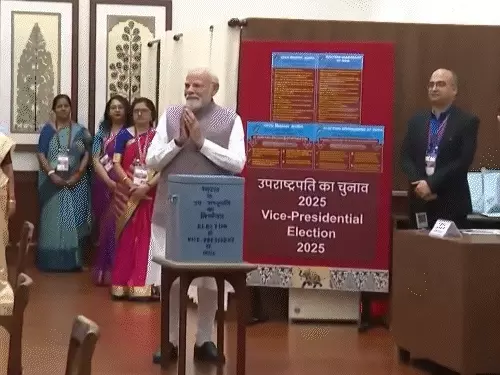
Contents
New Delhi,Sep.09,2025:Vice Presidential Election 2025 is underway, marking a significant milestone in Indian politics. Following Jagdeep Dhankhar’s unexpected resignation in July, prompted by health concerns, a new election—via secret ballot among MPs—is being held to fill the nation’s second-highest constitutional office. This contest not only determines the successor but could also shape Parliament’s tone and constitutional symbolism for years to come.
Voting Begins—Modi Casts First Vote
Voting for the Vice Presidential Election 2025 commenced on September 9, 2025, at 10 a.m. in the new Parliament building. Prime Minister Narendra Modi made headlines by being the first to cast his vote.
Candidates in the Ring- Radhakrishnan vs. Sudershan Reddy
The ruling NDA has nominated C P Radhakrishnan, the Governor of Maharashtra and a seasoned BJP leader. The INDIA bloc countered with Justice (Retd.) B Sudershan Reddy, a former Supreme Court judge representing a constitutional and principled vision.
Political Abstentions That Could Shift Margins
Three parties—BRS, BJD, and Shiromani Akali Dal (SAD)—have chosen to abstain from voting. Collectively, they account for 14 MPs (4 BRS, 7 BJD, and 3 SAD). BRS cited farmers’ distress, especially a urea shortage in Telangana, for their decision. BJD emphasized Odisha’s development as their priority, distancing themselves from both alliances.
These abstentions may dent the NDA’s potential vote margin—it reduces the total voter base and lowers the majority threshold.
Tactical Dynamics- Strategy, Criticism & Controversies
Strategic Positioning
- NDA insiders are confident—multiple BJP leaders foresee a “thumping majority” victory for Radhakrishnan.
- The Opposition rehearsed a mock vote to maintain unity and reduce voting errors.
Controversial Exchanges
- BJP attacked Reddy for meeting RJD’s Lalu Prasad Yadav, a convicted leader, labeling it “hypocrisy” and drawing legal censure.
- Reddy responded, arguing MPs should vote according to conscience—“there cannot be a party whip” for this election.
Why Radhakrishnan Has the Edge
In a Parliament of 781 MPs (with vacancies), the magic number to win is 391. NDA reportedly has support from 425 MPs, bolstered by YSRCP’s 11-member backing, raising their tally to 436. In contrast, Reddy must consolidate support from INDIA bloc and sympathetic parties—yet, even with full opposition backing, the margin looks narrow.
Abstentions and potential cross-voting could narrow this gap, but Radhakrishnan remains the clear favorite.
Why This Election Is More Than Just a Result
Beyond numbers, the Vice Presidential Election 2025 symbolizes deeper ideological and institutional undercurrents:
- The vice president also serves as Rajya Sabha Chair and acting president when needed.
- Reddy portrays the contest as a battle for constitutional conscience, pledging institutional sanctity and democratic reflection.
- Radhakrishnan positions his victory as a triumph of Indian nationalism and unity, signaling ideological consolidation.
What to Watch, and What Comes Next
As voting proceeds until 5 p.m., the counting is slated to begin at 6 p.m. with results due later today. Though NDA’s numerical dominance suggests victory for Radhakrishnan, the precise margin and any surprises (from cross-voting or abstainers) will be telling.
The outcome will impact Rajya Sabha leadership, institutional balance, and set the tone for India’s evolving political contours.
Delhi/NCR
Impeach CEC Gyanesh Kumar: Explore the mounting storm as the opposition prepares to impeach CEC Gyanesh Kumar amid serious bias and SIR controversy
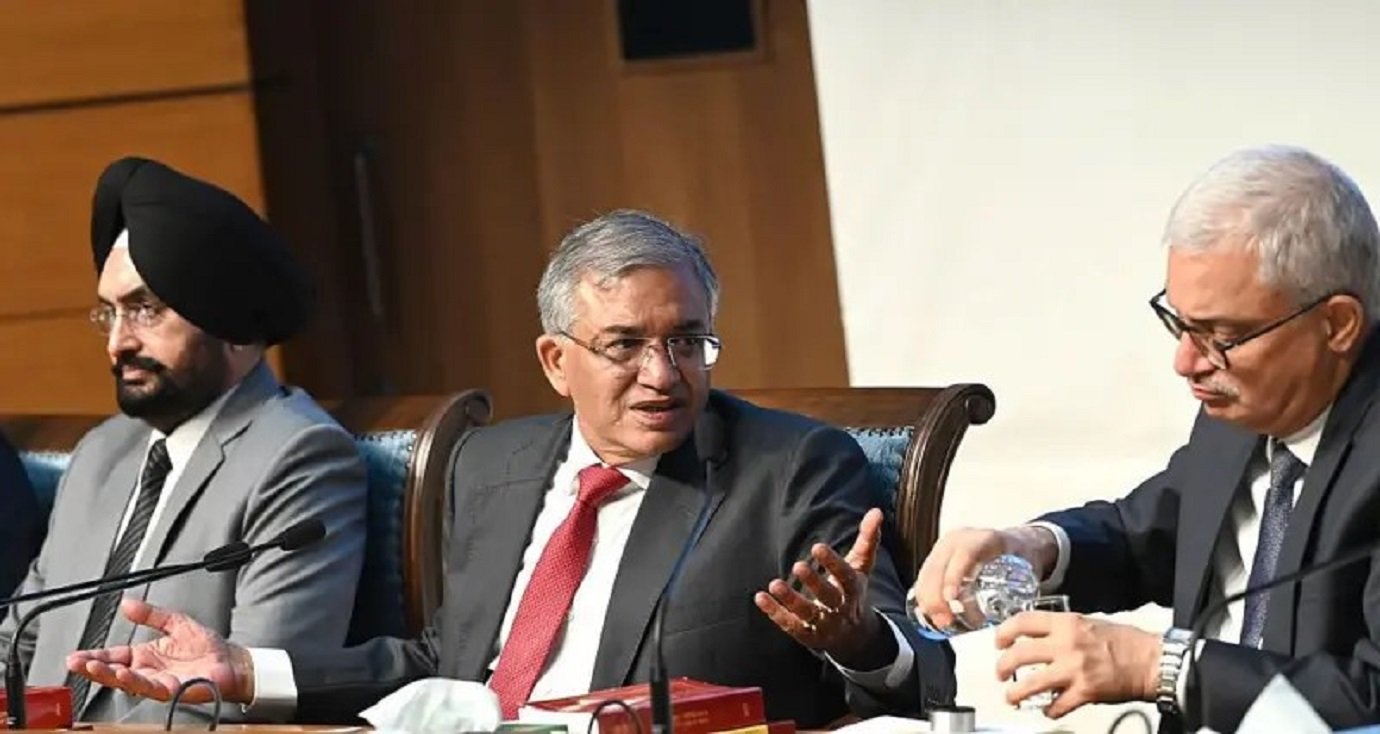
Contents
New Delhi, Aug.19,2025: On August 18–19, 2025, far-reaching tensions surfaced when INDIA bloc leaders convened to strategize over a potential impeachment motion against CEC Gyanesh Kumar. The spark? Allegations of irregularities in the Special Intensive Revision (SIR) of voter lists in Bihar
A Political Flashpoint
Impeach CEC Gyanesh Kumar looms as a rallying cry among opposition voices, signaling their intent to launch impeachment proceedings against the Chief Election Commissioner. This phrase—used here to maintain a keyword density of approximately 1–1.5%—captures the heart of a whirlwind political battle over electoral trust and the integrity of India’s democratic machinery.
What Sparked the Opposition’s Move
On August 18–19, 2025, far-reaching tensions surfaced when INDIA bloc leaders convened to strategize over a potential impeachment motion against CEC Gyanesh Kumar. The spark? Allegations of irregularities in the Special Intensive Revision (SIR) of voter lists in Bihar, which the opposition insists was a tool for “vote theft”.
These developments followed Rahul Gandhi’s “Voter Adhikar Yatra,” where he accused the Election Commission of systemic electoral tampering.
Allegations Against the CEC
- Leaders from the INDIA bloc accused the CEC of acting like a “BJP spokesman”, compromising the neutrality of the office.
- The Samajwadi Party, through Akhilesh Yadav, went further—producing affidavits to counter the CEC’s denial and claiming targeted deletion of backward-class voters.
- Trinamool Congress’s Abhishek Banerjee vowed to challenge the EC both legally and in Parliament, underscoring the depth of distrust.
CEC’s Response: Ultimatum and Defense
In a decisive press conference, CEC Gyanesh Kumar labelled the opposition’s claims as baseless. He issued an ultimatum: submit a signed affidavit within seven days or apologize to the nation—otherwise, the allegations of “vote theft” would be dismissed as invalid.
Further, Kumar argued that using phrases like ‘vote theft’ undermine the integrity of millions of voters and election workers.
How to Impeach CEC Gyanesh Kumar
Constitutional & Legal Pathway
The removal of the Chief Election Commissioner is strictly guided by Article 324(5) of the Constitution and Section 11(2) of the 2023 Appointment Act. It mandates:
- Grounds for Removal: Only on proven misbehaviour or incapacity, equivalent to those for removing a Supreme Court judge.
- Initiation: Motion introduced in either Parliament house, backed by at least 50 MPs in Rajya Sabha or 100 MPs in Lok Sabha.
- Investigation: A judicial inquiry committee examines the validity of allegations.
- Parliament Vote: Must secure a two-thirds majority of members present and voting in both houses.
- Final Step: President issues removal order based on the passed motion; no discretion remains
Further protections include legal immunity under Clause 16 of the 2023 Act—shielding the CEC from court proceedings for official actions.
Why It’s an Uphill Task
- Rigid Constitutional Threshold: The exceptionally high bar—two-thirds majority—is difficult, particularly while the ruling alliance commands a comfortable majority in both houses.
- Lack of Precedent: No CEC has ever been removed since India’s independence, reflecting the formidable safeguard built into the system.
- Political Realities: Although the INDIA bloc is mobilizing support, achieving the numerical strength needed for impeachment remains a daunting task.
Political Implications Ahead
- The opposition’s move amplifies existing mistrust towards the Election Commission and questions its ability to ensure fair processes.
- It raises broader concerns about executive overreach and challenges to institutional autonomy.
- As parliamentary sessions progress, public demonstrations like the ‘Voter Adhikar Yatra’ and legal challenges will intensify political pressure.
- The unfolding developments could have long-term impact on public faith in electoral governance and shape future reforms.
The call to Impeach CEC Gyanesh Kumar reflects the crescendoing political confrontation enveloping India’s electoral framework—a struggle as much about numbers in Parliament as it is about preserving democratic credibility. While the opposition is serious in its intent, fulfilling the constitutional prerequisites remains a towering challenge.
Stay tuned as this constitutional-legal-political drama unfolds in Parliament and beyond.
Delhi/NCR
Vote Chori Allegations erupt as Rahul Gandhi accuses ECI of electoral fraud—dissect the dramatic ultimatum
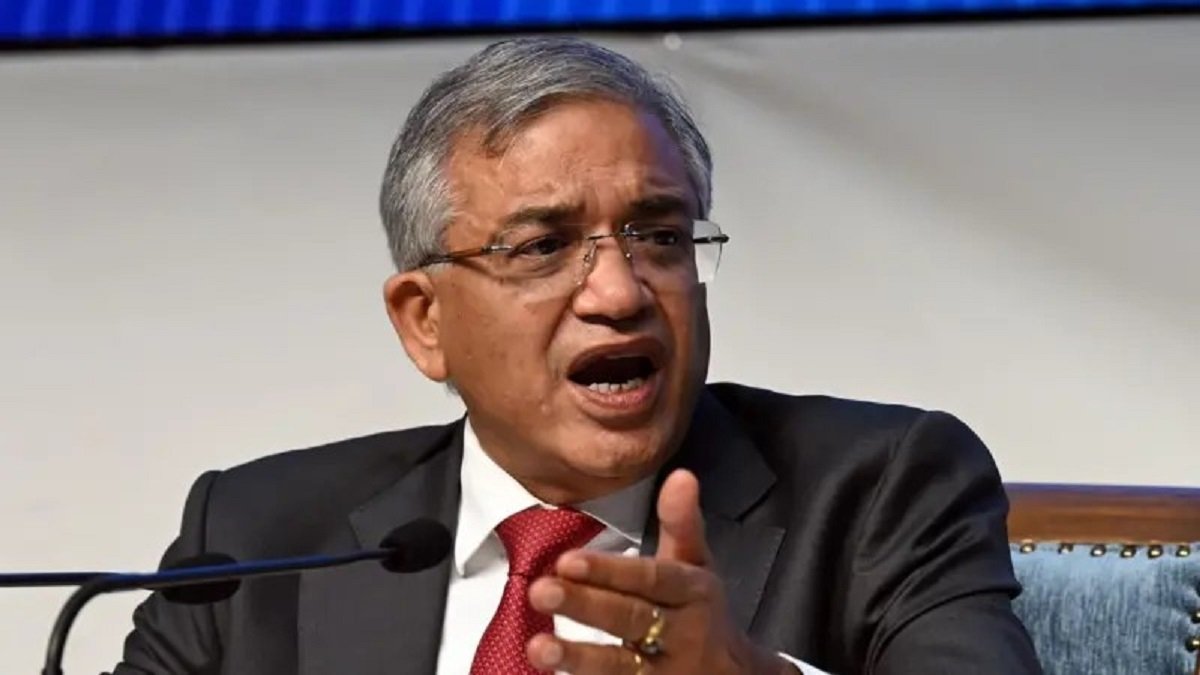
Contents
New Delhi, Aug.18,2025: These Vote Chori Allegations triggered a forceful response from the Chief Election Commissioner (CEC), shifting the national conversation toward electoral integrity
Vote Chori Allegations, A Political Firestorm Begins
Vote Chori Allegations ignited when Rahul Gandhi, the Leader of Opposition in the Lok Sabha, accused the Election Commission of India (ECI) of systematic vote theft—a claim that dramatically escalated political tensions.
These Vote Chori Allegations triggered a forceful response from the Chief Election Commissioner (CEC), shifting the national conversation toward electoral integrity and accountability.
Rahul Gandhi’s Accusations and Presentation
On August 7, 2025, Rahul Gandhi delivered a detailed PowerPoint-backed presentation, alleging fraudulent voter registrations in the Mahadevapura segment of Bengaluru—claiming more than 100,000 fake voters were added to sway election outcomes.
He dubbed the ongoing Bihar SIR (Special Intensive Revision) as another manipulative strategy, labeling it a “conspiracy to steal” votes.
Affidavit or Apology Demand
In a rare press conference, CEC Gyanesh Kumar refuted the Vote Chori Allegations as “baseless,” demanding that Rahul Gandhi either submit a sworn affidavit with evidence within seven days or publicly apologize, warning that failure to do so would result in the claims being deemed invalid.
The Commission defended the SIR process in Bihar as transparent and constitutionally mandated. It dismissed alleged data anomalies—such as duplicate EPIC IDs or those with “house number zero”—as administrative artifacts rather than proof of foul play.
Legal & Supreme Court Backdrop
The Supreme Court intervened amid growing scrutiny, directing the ECI to publish booth-level lists of over 6.5 million deleted voters, with reasons, by August 19, as part of a transparency drive.
This judicial step adds legal weight to the ongoing political standoff over the Vote Chori Allegations.
Opposition’s Defiant Strategy and Yatra Momentum
Rahul Gandhi’s launch of the “Voter Adhikar Yatra” from Bihar’s Sasaram became an electrifying demonstration of opposition solidarity, with key INDIA bloc leaders denouncing the Vote Chori Allegations and accusing the ECI of being complicit with the ruling party.
In a pointed critique, Gandhi also questioned why similar affidavits were not requested from BJP leaders like Anurag Thakur, suggesting selective accountability.
Analysts Weigh In: Democracy at Stake
Political analysts have deeply scrutinized the press conference. BBC’s Hemant Atri noted that the CEC seemed to mirror a political rather than constitutional tone—deflecting rather than addressing core concerns.
Observers warn that unresolved Vote Chori Allegations could corrode public trust in democratic institutions.
Meanwhile, some voices in media argued procedural fairness: if making such serious allegations, Gandhi should legally formalize them via affidavit.
Impeachment Talk and Wider Fallout
Opposition leaders are now considering a bold constitutional recourse—impeachment of the CEC—arguing he evaded responsibility as a symbol of democratic failure.
Under Article 324(5), removing the CEC would require a motion in Parliament, equivalent to removing a Supreme Court judge.
As the seven-day deadline approaches, the nation is waiting: will Gandhi produce sworn evidence or retract his claims? These pending developments will shape India’s electoral narrative leading up to the next polls.
Bihar
Yogendra Yadav 10 questions SIR Bihar” challenge the Election Commission’s SIR press conference—raising transparency alarms and public trust issues
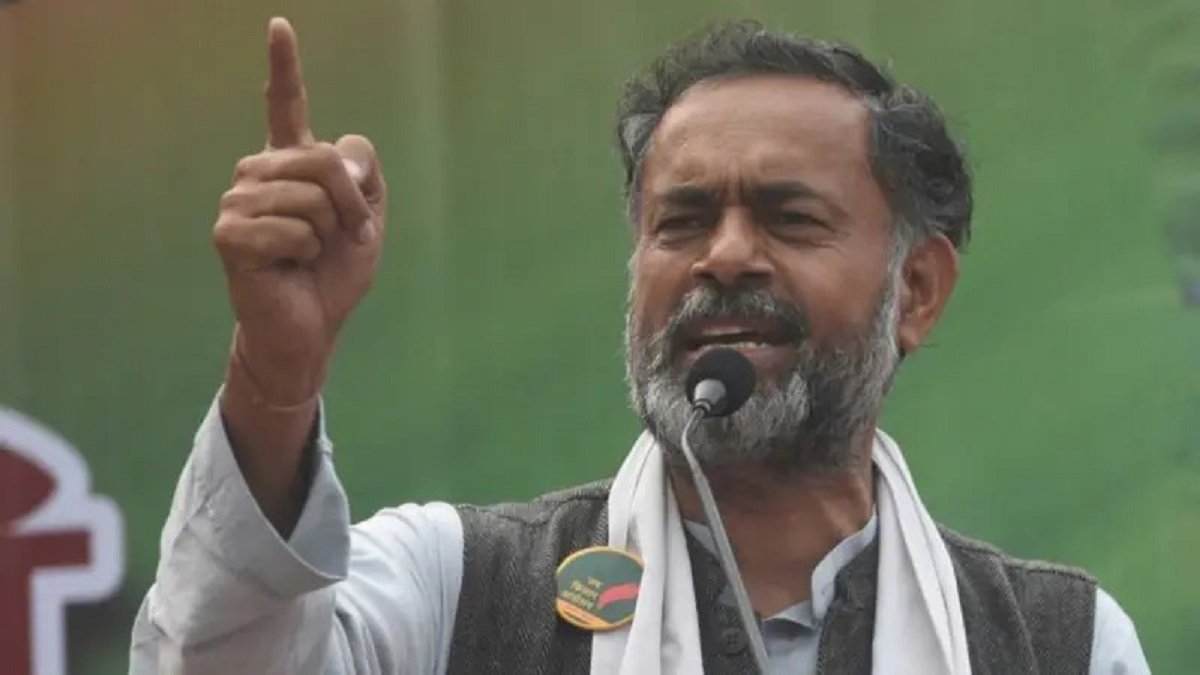
Contents
Bihar, Aug.18,2025: Prominent political analyst and activist Yogendra Yadav sharply criticized the EC’s recent Delhi press conference as a “sham”. He accused the commission of
What Is SIR and Why It Matters
The Special Intensive Revision (SIR) of electoral rolls in Bihar has become a flashpoint. Conducted ahead of the 2025 Assembly elections, it aimed at correcting electoral discrepancies. However, critics argue that it risked mass voter exclusion by demanding documentation amid floods and time constraints. Political tensions have soared, with accusations of “vote theft” and democratic sabotage becoming widespread.
Yogendra Yadav Sets the Tone
Prominent political analyst and activist Yogendra Yadav sharply criticized the EC’s recent Delhi press conference as a “sham”. He accused the commission of evasive answers and failing to address core concerns raised by opposition leaders.
The 10 Unanswered Questions, Exposed
Yadav publicly shared ten pointed questions—vital to electoral fairness—that the EC sidestepped:
- Why were political parties not consulted before undertaking SIR?
- Why bypass the EC’s own rule against intensive revision during election years?
- Why rush SIR amid monsoon floods?
- How many voters were added during SIR (June–July)?
- How many forms lacked documentation?
- How many forms did Booth Level Officers (BLOs) mark as “not recommended”—and why?
- How many foreign nationals were identified in the existing voter list during SIR?
- Why was the format changed after Rahul Gandhi’s press conference?
- Why wasn’t an affidavit requested from Anurag Thakur?
- Why wasn’t the affidavit from SP scrutinized?
These questions cut to the heart of process transparency, procedural fairness, and political neutrality.
Why EC’s Silence Signals Trouble
Chief Election Commissioner Gyanesh Kumar defended the EC’s neutrality, asserting it treats all political parties equally. Yet, he largely declined to address many of the key issues journalists and opposition figures raised.
Opposition has decried the press conference as insufficient, calling for clear, direct answers—rather than dismissive statements.
Political Turmoil Surrounding SIR
The SIR controversy has spurred intense political mobilization:
- The “Voter Adhikar Yatra”, led by Rahul Gandhi and consisting of INDIA bloc allies, protests alleged disenfranchisement and calls for electoral justice.
- RJD leader Tejashwi Yadav accused the EC of deleting his name from voter rolls despite valid credentials, claiming a conspiracy.
- Former UP CM Akhilesh Yadav criticized the exercise as politically timed to undermine voters.
- In state assembly, CM Nitish Kumar dismissed Tejashwi’s concerns, calling him “still a kid.”
Implications and Next Steps
Yadav’s list underscores a growing demand for electoral transparency. The next move lies with the EC—will it respond substantively or evade further? The unfolding “Voter Adhikar Yatra” carries weight across 1,300 km of Bihar, signaling mounting public pressure. Legal scrutiny and protests are expected to escalate as stakes rise.
Bihar
Bihar 65 lakh voters deleted list” and understand its implications for electoral transparency and democracy in Bihar
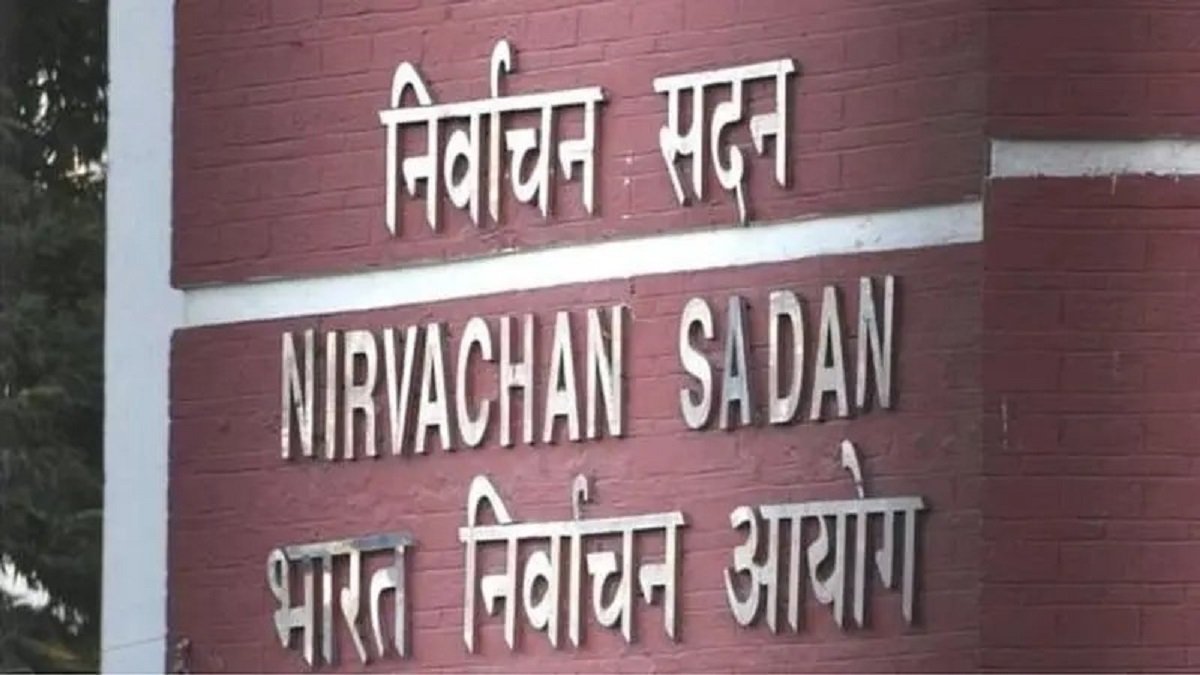
Contents
Bihar, Aug.18,2025: Reacting to legal challenges, a Supreme Court bench of Justices Surya Kant and Joymalya Bagchi on August 14, 2025, issued an interim order demanding the EC publish the
What Sparked the Controversy
The Bihar 65 lakh voters deleted list controversy stems from the Special Intensive Revision (SIR) of electoral rolls conducted before the 2025 Bihar Assembly elections. Under SIR, the Election Commission required extensive documentation—excluding widely held IDs like Aadhaar and Voter ID—for inclusion in the draft list. As a result, nearly 65 lakh voters were omitted, prompting allegations of voter disenfranchisement and procedural opacity.
Supreme Court’s Firm Directive
Reacting to legal challenges, a Supreme Court bench of Justices Surya Kant and Joymalya Bagchi on August 14, 2025, issued an interim order demanding the EC publish the deleted names with reasons, in a booth-wise, district-wise manner—searchable by EPIC number—and widely publicize the lists. These lists were to be accessible physically at booth-level offices and through media channels. Aadhaar and EPIC were also permitted as valid ID proofs for raising objections.
EC’s Rapid Compliance: 56 Hours Later
In a visibly swift response, the EC published the Bihar 65 lakh voters deleted list within 56 hours of the court’s directive. Chief Election Commissioner Gyanesh Kumar confirmed that the list is available on district magistrates’ websites and the Bihar CEO portal.
What’s in the Deleted List? Reasons Revealed
According to the CEO of Bihar, Vinod Singh Gunjiyal, the 65 lakh removed names were accompanied by removal reasons—categorized as “Deceased,” “Permanently Shifted,” “Absent,” or “Repeated Entry.” Of the total 7.89 crore voters, the first draft included 7.24 crore; the deleted subset thus marks a significant drop. Reports detail that around 36 lakh were marked as migrated and 22 lakh as deceased.
How Voters Can Check
Voters can check their inclusion status using their EPIC number on the Bihar CEO’s website or district portals, which redirect to the ECI’s voter service portal. Booth-wise downloadable lists include vital details—name, EPIC number, age, gender, and removal reason—to ensure transparency and enable timely claims
Political and Public Backlash
The publication has triggered political backlash:
- Opposition leaders call it an attack on democracy. CPI(ML) labeled it as the “biggest attack” on India’s Constitution, citing mass disenfranchisement—especially of marginalized communities and migrants.
- Congress mobilized protests nationwide under the ‘vote chori’ campaign, demanding trusteeship over election integrity. Rahul Gandhi and others led rallies and threatened legal action.
- Public figures and watchdogs, like the Association for Democratic Reforms (ADR), pushed for transparency and cautioned about systemic voter exclusion.
With the final electoral roll due by September 1, Bihar enters a crucial review window where affected voters can submit claims using Aadhaar or EPIC as proof. Political parties and civil society are closely watching the process. The Supreme Court has slated the next hearing for August 22, where the EC’s compliance report will be assessed.
Delhi/NCR
Constitution Club vote-presence triumph electrified Delhi’s parliamentary elite—
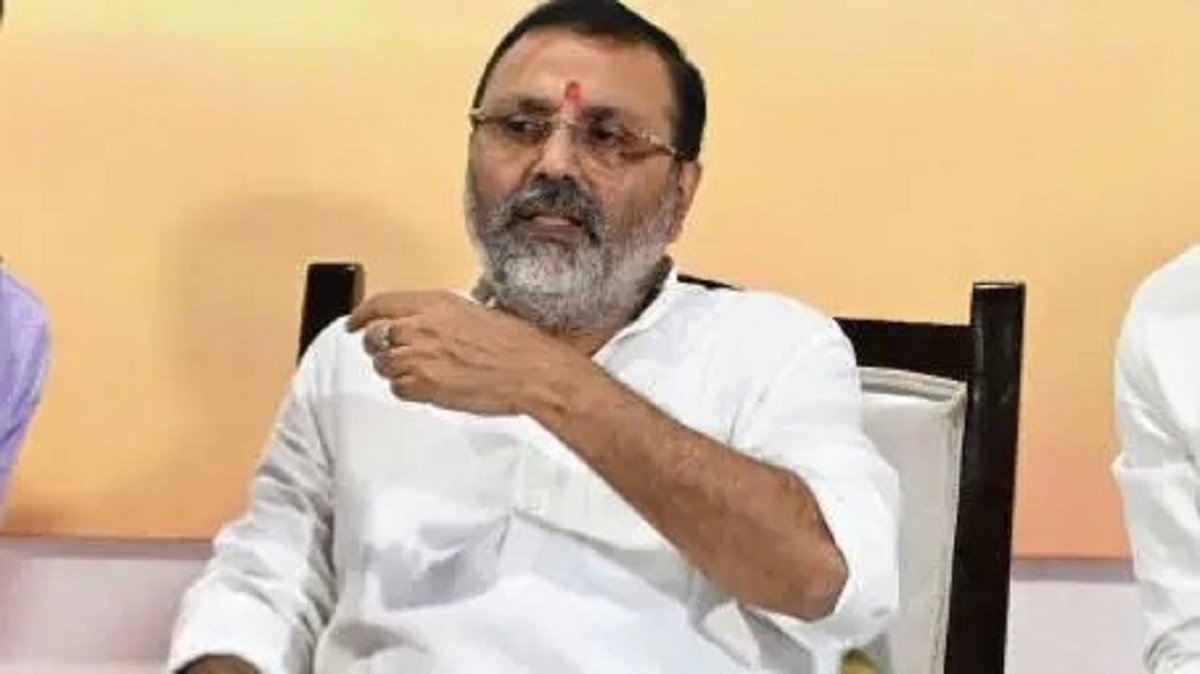
Contents
New Delhi,Aug.13,2025: Constitution Club vote-presence triumph unfolded as one of the most closely watched political events in recent Delhi history. A normally low-key electoral process turned into a high-drama spectacle as MPs lined up in droves to cast their ballots. It wasn’t just the vote—but who showed up to vote—that transformed the outcome into a resounding statement.
On August 12, 2025, the Constitution Club of India held elections for the coveted Secretary (Administration) post. Incumbent Rajiv Pratap Rudy, who has held the position for over 25 years, faced a spirited challenge from fellow BJP leader Sanjeev Balyan.
Despite the challenge, Rudy secured victory with around 391 votes to Balyan’s 291, out of 707 votes cast—a rare high turnout for this club and a clear Constitution Club vote-presence triumph.
Why “Constitution Club vote-presence triumph” Mattered
This wasn’t merely an election—it became a symbolic resurgence of parliamentary dignity. BJP MP Nishikant Dubey remarked that the Constitution Club had strayed into the hands of bureaucrats and intermediaries, draining its purpose. He hailed the Constitution Club vote-presence triumph as a reclamation by MPs themselves
The High-Profile Turnout: A Game Changer
Heavyweights Who Voted
This vote drew a galaxy of political stars—Home Minister Amit Shah, BJP President JP Nadda, Congress stalwarts Sonia Gandhi and Mallikarjun Kharge, and more. Their presence decisively turned what is usually a procedural affair into a Constitution Club vote-presence triumph.
What Their Presence Signified
Their participation sent a message: this election wasn’t a side event—it was a barometer of power within both the BJP and Parliament at large. It elevated the institutional significance of the Constitution Club and underscored the Constitution Club vote-presence triumph as a moment of cross-party acknowledgment.
The Intriguing BJP vs BJP Duel
Rudy: The Stalwart Incumbent
Rajiv Pratap Rudy’s quarter-century control reflected both infrastructural transformation and entrenched sway within parliamentary circles. His continued win reaffirmed that legacy—but only after he withstood a formidable challenge.
Balyan: The Challenger Backed for Change
Sanjeev Balyan, a grassroots-oriented former MP from western UP, campaigned as a disruptor against stagnation. Dubey and like-minded voices framed his campaign around restoring the club to MPs, away from administrative excess.
Nishikant Dubey’s Role
Dubey emerged as Balyan’s most visible backer, arguing that the club had lost its soul to bureaucrats and needed to return to its parliamentary owners. His support was pivotal in transforming the contest into a high-stakes show of democratic values
Election Results Unpacked
- Total eligible voters: ~1,295 MPs and ex-MPs
- Votes cast: ~707 — an unusually high
- Rudy’s votes: ~391
- Balyan’s votes: ~291
- Margin: ~100 votes — clear meaningful win Rudy attributed his win to a bipartisan panel including leaders from Congress, SP, TMC, and others, calling it a collective parliamentarian victory.
Broader Implications & Diplomatic Symbolism
The Constitution Club vote-presence triumph symbolizes a deeper continuum of parliamentary power—where institutional leadership still hinges on cross-party consensus, not just party politics. It also reflects how elite platforms like CCI remain vital hubs for informal diplomacy and dialogue among India’s political elite.
Why This Vote Matters
The Constitution Club vote-presence triumph underscores both a nod to continuity and a wake-up call about complacency. It revived the club’s parliamentary essence and spotlighted how leadership—even in institutionally modest posts—matters in shaping political narratives.

 Breaking News1 month ago
Breaking News1 month agoBalen Shah, Kathmandu’s independent mayor, from rapper to political leader. Explore his rise amidst Nepal’s youth-led revolution-

 Breaking News2 weeks ago
Breaking News2 weeks agoKanya Pujan 2025 Step-by-Step Rituals, Timings, and Powerful Benefits Explained-

 Breaking News3 weeks ago
Breaking News3 weeks agoShoaib Akhtar criticism, Pakistan vs India Asia Cup 2025-

 Breaking News3 weeks ago
Breaking News3 weeks agoJoganiya Mata history reveals her connection to the Hada dynasty, sacred legends, and evolving rituals at Chittorgarh’s revered temple-

 Breaking News3 weeks ago
Breaking News3 weeks agoCelebrate Chamunda Mata Ji Temple Navratri 2025 with nine days of spiritual devotion, cultural festivities-

 Breaking News1 month ago
Breaking News1 month agoPitru Paksha 2025-Seven Powerful Rituals and Sacred Places to Free Five Generations

 Breaking News3 weeks ago
Breaking News3 weeks agoAbhishek Sharma’s explosive 75 runs secured India’s spot in the Asia Cup 2025 Final- Will India face Pakistan or Bangladesh next-

 Breaking News1 month ago
Breaking News1 month agoMumbai Ganesh Visarjan Security is elevated with AI, drones, 10,000+ CCTVs, over 21,000 police personnel and
































